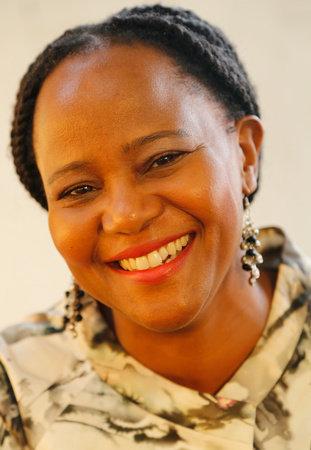
Edwidge Danticat is the author of numerous books, including Claire of the Sea Light, a New York Times notable book; Brother, I’m Dying, a National Book Critics Circle Award winner and National Book Award finalist; Breath, Eyes, Memory, an Oprah Book Club selection; Krik? Krak!, a National Book Award finalist; The Farming of Bones, an American Book Award winner; and The Dew Breaker, a PEN/Faulkner Award finalist and winner of the inaugural Story Prize. The recipient of a MacArthur Fellowship, she has been published in The New Yorker, The New York Times, and elsewhere. She lives in Miami.She lives in Miami.
Posts By This Author
The Possibility of Heaven
"After all, hadn't God led me here so you and I can deal with this together?" my mother said.
A YEAR BEFORE her death from ovarian cancer, my 78-year-old mother finally started losing weight. She gave up fatty foods and sweets and went to herbalists who sold her pills that were supposed to regulate her digestion. In addition to all this, she was seeing her primary physician every three months.
The weight flying off seemed like a reward for her good behavior. The only downside was that my mother, who now weighed less than me, was burping all the time, as if there was thunder trapped inside her ever-shrinking body.
At Christmas time, I invited her to come spend the holidays with me and my family in Miami. At first she said no. Her birthday was three days after Christmas and she wanted to spend it at her home in New York.
She changed her mind right before Christmas, and she cooked us a wonderful Christmas dinner, and we took her to one of our favorite Haitian restaurants for her birthday. At her birthday dinner, my two daughters performed a birthday dance for her in the middle of the restaurant, and my usually reserved mother laughed and clapped with joy, a kind of joy we would rarely see again in the months that followed.
House of Prayer and Dreams
Haiti's once and future cathedral is a place of healing and memory.
WE WERE LOOKING at cathedrals while others were mourning and burying their dead.
It was the first day of the international design competition that would help choose a few architectural plans that might be used to rebuild Notre Dame de l'Assomption, Our Lady of the Assumption, Port-au-Prince's most famous cathedral. This cathedral was so central to the city that, before it was leveled in the Jan. 12, 2010, earthquake, its turrets could be seen from most places in Port-au-Prince, as well as from the sea, where mariners used a light on the cupola of the church's north tower to help bring their ships home.
During the 2010 earthquake, the Catholic archbishop of Port-au-Prince, Monsignor Joseph Serge Miot, was killed inside an administrative building adjoining the cathedral, along with priests and parishioners. It was the images of their crushed bodies and their loved ones wailing around the perimeters of the cathedral's rubble that motivated me, a non-architect and non-Catholic—but a lover of cathedrals—to agree to join a development strategist, a preservationist architect, a structural engineer, a priest and liturgical consultant, the dean and associate dean of two architectural schools, and the editor of a magazine that discusses the dual issues of faith and architecture to help select three out of the 134 moving, elegant, and in some cases totally out-there designs that we had received from architects all over the world. Among the panelists, three of us were Haitian born, and many of the others had either worked in Haiti or in the Catholic Church for years.
The selection exercise itself was one that mirrored faith, blind faith. We were looking at sketches and plans but had no idea who had designed them. Some of the entries contained written statements that were so moving in their optimism for Port-au-Prince and its 3 million inhabitants, their hopes for Haiti and her people, and their longing for the rebuilt cathedral to serve as a symbol of renewal that they nearly brought me to tears.
Living and Loving Through Tragedy
Haiti: Living and Loving Through Tragedy
I was at the supermarket at my home in Florida with my two young daughters when my sister-in-law called to ask if I'd heard that there had been an earthquake in Haiti. I was a bit stunned. "Earthquake?" I said. Are you sure? She said it was 7.0. That didn't quite register for me. Then she said it was catastrophic.
The Indigo Girl
Between Haiti and the streets of Brooklyn
Between Haiti and the streets of Brooklyn

